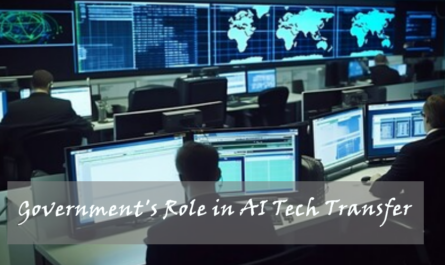In the not-so-distant realm of technological evolution, Artificial Intelligence (AI) has emerged as a double-edged sword, offering unprecedented advancements in various sectors while simultaneously posing substantial threats to global safety. As we stand at the precipice of an AI-driven future, it becomes imperative to delve into the intricacies of the risks associated with this burgeoning technology and explore why addressing AI threats is a matter of utmost urgency for the well-being of humanity.
The Unparalleled Rise of Artificial Intelligence
Artificial Intelligence, with its ability to simulate human intelligence in machines, has witnessed an exponential surge in adoption across industries. From enhancing efficiency in healthcare and streamlining manufacturing processes to transforming the way we communicate and conduct business, AI’s impact is far-reaching and transformative.
The Dark Side: Unraveling the Threats Posed by AI
While the benefits of AI are undeniable, the shadows cast by potential threats loom large. One of the primary concerns is the rapid pace at which AI is advancing, often outstripping our ability to regulate and comprehend its implications fully. The unpredictable nature of advanced AI systems raises red flags, and addressing these concerns is pivotal for maintaining a balance between innovation and safety.
**1. Autonomous Weapons: The Looming Specter
AI-powered autonomous weapons represent a formidable threat to global security. As nations race to develop military applications of AI, the risk of autonomous weapons falling into the wrong hands becomes a pressing concern. The ethical implications of AI in warfare demand careful consideration, urging governments and international bodies to establish clear regulations to prevent the misuse of this technology.
**2. Privacy Erosion: A Silent Intruder
The ubiquity of AI-driven surveillance systems has given rise to a pervasive erosion of privacy. Facial recognition technologies and AI algorithms that predict human behavior have raised ethical questions about the extent to which our personal lives are scrutinized. Addressing the ethical dimensions of AI and implementing robust privacy regulations are crucial steps toward mitigating the risks associated with invasive surveillance.
**3. Algorithmic Bias: Reinforcing Inequality
AI systems, trained on historical data, can inadvertently perpetuate and amplify existing biases. This phenomenon, known as algorithmic bias, poses a threat to societal fairness and inclusivity. As AI applications become integral parts of decision-making processes in areas such as hiring, finance, and criminal justice, addressing and rectifying algorithmic bias is paramount to prevent further entrenchment of social inequalities.
**4. Job Displacement: Navigating the Workforce Revolution
The integration of AI and automation into various industries has the potential to disrupt traditional employment structures. While AI can lead to increased productivity, the displacement of human workers remains a concern. Proactive measures, such as upskilling and reskilling programs, are essential to mitigate the impact of AI on employment and ensure a smooth transition into the era of automation.
**5. Existential Risks: Safeguarding Humanity
As AI systems become more sophisticated, the notion of existential risks emerges. The hypothetical scenario of superintelligent AI posing an existential threat to humanity is a topic of intense debate among experts. To address this, fostering interdisciplinary collaboration, establishing ethical guidelines, and implementing stringent safety protocols are imperative to prevent unintended consequences that could jeopardize the very fabric of our existence.
The Urgency of Addressing AI Threats
The urgency of addressing AI threats lies in the potential for irreversible consequences if left unchecked. Unlike conventional threats, the rapid evolution of AI demands proactive measures to ensure that its deployment aligns with ethical considerations and global safety standards.
**1. International Collaboration: A Unified Front
Addressing AI threats requires a coordinated effort on a global scale. International collaboration, involving governments, industry leaders, and ethical AI researchers, is paramount to establish universal standards and regulations. Forums and treaties that facilitate the exchange of knowledge and expertise can foster a collective approach to addressing AI-related challenges.
**2. Ethical Frameworks: Guiding AI Development
Developing and adhering to ethical frameworks is crucial in steering the development and deployment of AI in a direction that aligns with human values. Ethical considerations must be integrated into every stage of AI development, from data collection and algorithm training to implementation and ongoing monitoring.
**3. Transparency and Accountability: Building Trust
Ensuring transparency and accountability in AI systems is essential for building trust among users and stakeholders. Clear explanations of how AI algorithms operate, along with mechanisms to address biases and errors, can instill confidence in the reliability and fairness of AI technologies.
**4. Education and Awareness: Empowering Society
Raising awareness about the implications of AI and educating the public on its risks and benefits are integral components of addressing AI threats. An informed and vigilant society is better equipped to participate in shaping policies, demanding accountability, and fostering responsible AI practices.
**5. Continuous Monitoring and Adaptation: A Dynamic Approach
The landscape of AI is dynamic, and threats evolve alongside advancements. Establishing mechanisms for continuous monitoring and adaptation is essential to stay ahead of potential risks. Regular assessments, audits, and updates to regulatory frameworks can ensure that AI remains a force for good, rather than a source of harm.





